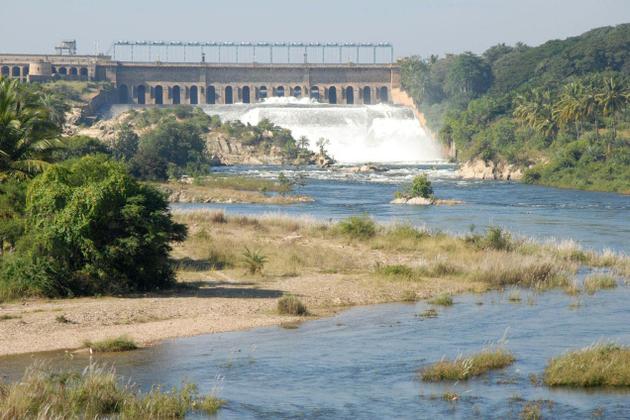 |
| For Illustrative Purpose Only |
With the population expected to stabilize around 10 Billion mark we will see an increasing demand for fresh water. The future wars are not expected to be oil, religion or land but for water. As with all natural resources the scramble will start when governments realize that they are not able to provide water to its citizens and populations rise up in revolt.
We in India have been treated to this scenario very closely over the last few days with the agitations in Bangaluru and Tamil Nadu taking a violent turn. Karnataka says that it cannot release the waters of Cauvery from its dams as it will face a severe drinking water shortage while farmers in Tamil Nadu have been vocal that if the water is not been released, they will face crop failure and ruin. The matter has reached the Supreme Court and even after the verdict has been delivered, the protests continue. These actions undermine the constitution and judicial supremacy. Also, a judicially settled matter presented out of context has been converted into emotive affair and has caused mayhem. In fact it needs to be pointed out that international laws exist for the sharing of waters between upper riparian states (Karnataka) and lower riparian states (Tamil Nadu).
Water disputed are not new to the subcontinent. We have has interstate disputed between Karnataka and Tamilnadu, Andhra and Maharashtra, Tamil Nadu and Kerela etc. From a country perspective also, we have had disputes between India and Pakistan. India and Pakistan have an ironclad agreement called the Indus Water treaty between them, but still the disputes continue. In Pakistan, the newest weapon of generating mass anger against India is by accusing India of water terrorism. Pakistan has been going to courts of arbitration and facing defeats fir various issues linked to the water sharing between the two nations. A milder problem also exists between Bangladesh and India. Teesta waters have been a thorny issues with the PM of Bangladesh scoring a point on Mamta Banerjee the CM of West Bengal. When the West Bengal CM asked for more exports of the hilsa fish from Bangladesh, the PM was tactful enough to point out that fish need water and if the Teesta waters are shared better, we can have more fish.
But, the question remains that barring the issue of population growth, what has caused such severe drought conditions and water scarcity? Let us take the example of India for this. We have had massive Industrialization with poor pollution control norms being set and the enforcement has been worse. Dams serve the triple purpose of water storage, hydel power generation and flood control. But poor land acquisition policies, unfulfilled promises of resettlement of affected villages and massive corruption in construction have ensured that big dams are now a political impossibility to push. Massive urbanization has caused severe stress in pockets of the country. The urban consumer also uses more water per capita than his rural counterpart. The convenience of having water on tap cultivates wasteful habits. The cropping pattern has also contributed to the stress in the agri sector. As farmers turned to cash crops the water availability and crop selection equation collapsed. Instead of millets which were the staple for our ancestor we are increasingly becoming rice and wheat eaters which consume about 4-5 times more water per acre than millets. We have become addicted to sugar and sugarcane which consumed almost 8-10 times water per acre than millets. Now we here rose farming being promoted in draught areas. Rose plants consume 17 times more water than millets. Such non sustainable agriculture practices have contributed to the water shortage.
The need of the hour is to conserve water. Rainwater harvesting and storage is essential. Check dams to ensure the water is percolated to the underground tables need to be promoted. Small and localized water storage schemes need to be invested in rather than big ticket dams. Drip and sprinkle irrigation have to be promoted. More importantly, we have to ensure that pollution is checked and controls enforced strictly. Desilting of existing waterways and ponds is easy win for augmenting storage capacity. The river banks need be strengthened with afforestation and shoring up to prevent more mud and silt to accumulate in the water. The national river integration program can also be a massive help.
It would be instructive to note that the decline of water due to climatic change and river channel changes are considered the chief reasons for the decline of the Indus valley civilization. The store house of knowledge that was developed during those times was frittered away. Such was the fame of the rich knowledge and scientific accomplishments of the civilization that Alexander the Great crossed the whole of Europe and Central Asia to come to the India by crossing the Indus river. The wars that were fought shaped the destiny of the subcontinent over the next two millenniums. To know more about the secrets of this ancient civilization which included Amrit and the Bramhastra, the forthcoming historical novel “The Indus Challenge” is a must read.